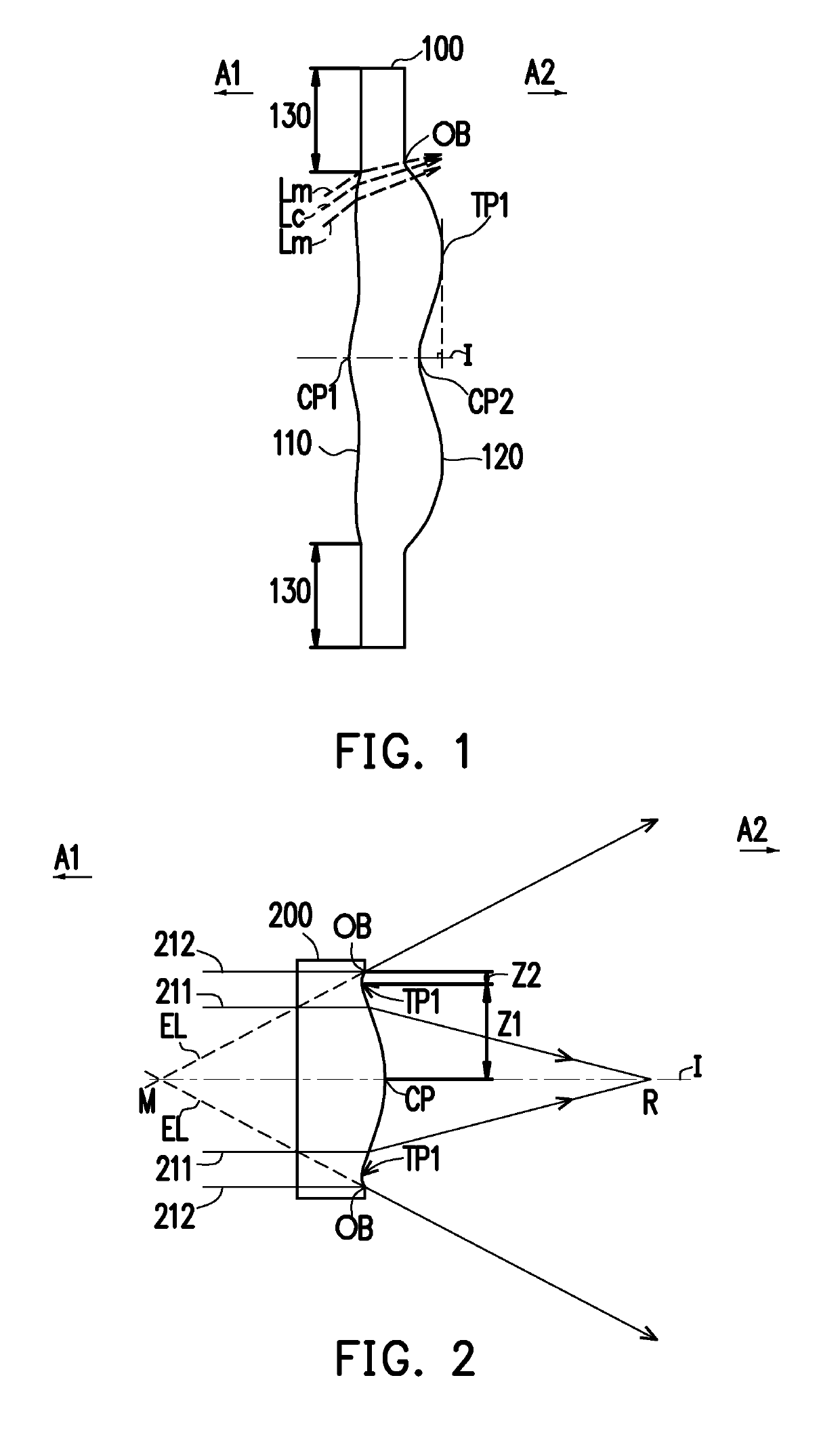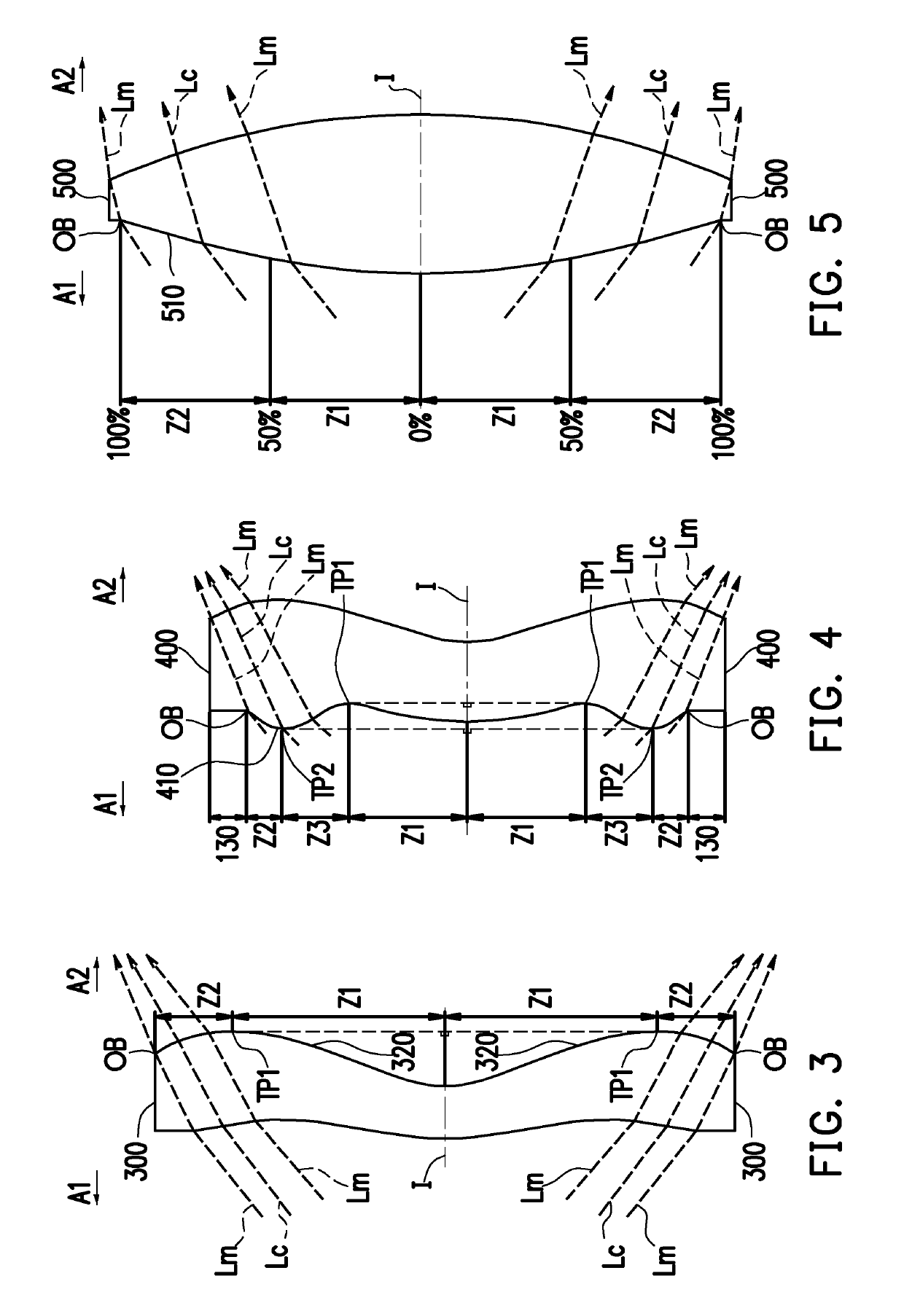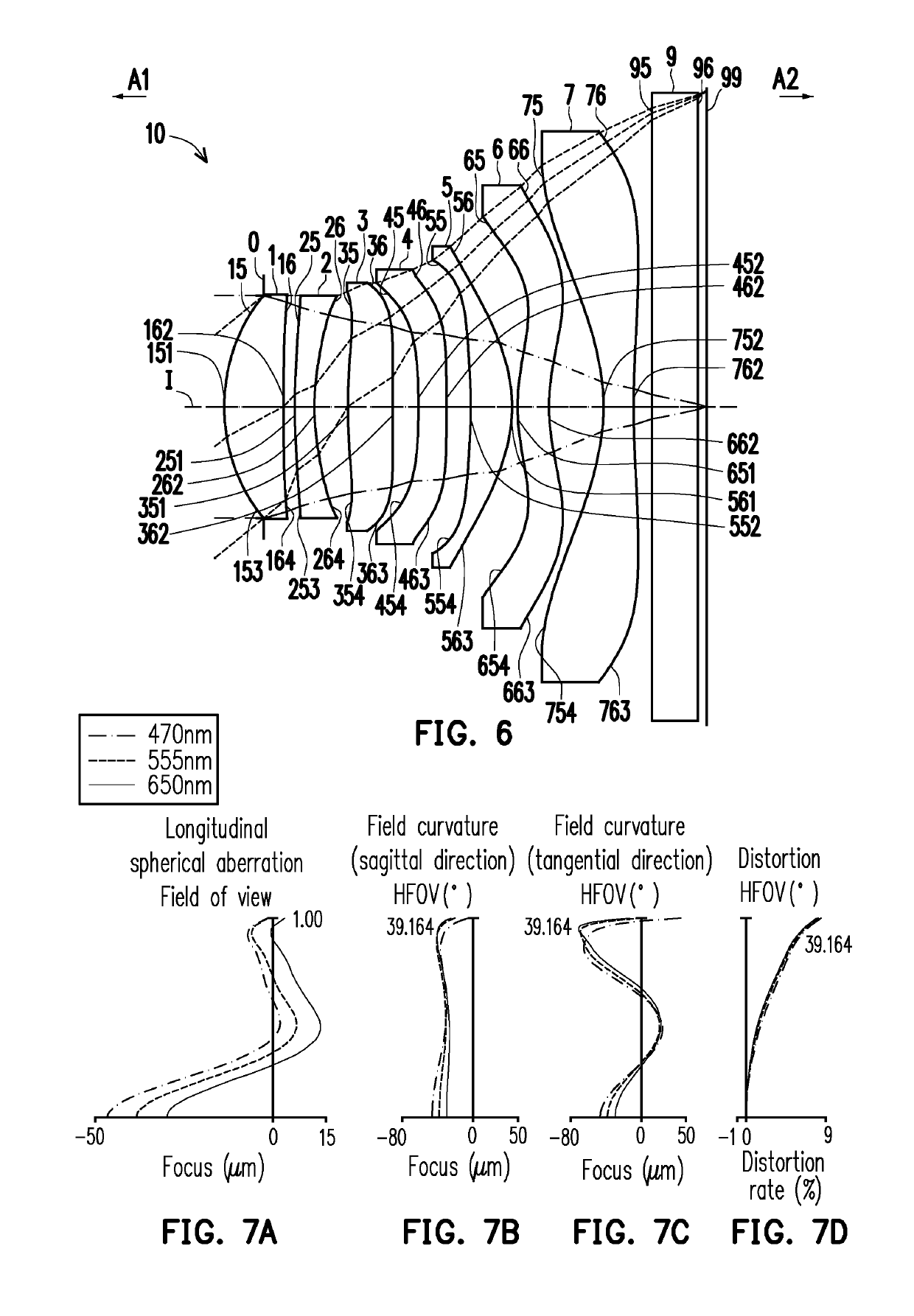Optical imaging lens
a technology of optical imaging and lens, applied in the field of optical devices, can solve the problems that the optical lens having both a miniaturized size and a desirable imaging quality cannot be simply manufactured, and achieve the effect of achieving a greater field of view and desirable optical performan
- Summary
- Abstract
- Description
- Claims
- Application Information
AI Technical Summary
Benefits of technology
Problems solved by technology
Method used
Image
Examples
first embodiment
[0084]In addition, relations of important parameters in the optical imaging lens 10 are as shown in FIGS. 38 and 39.
[0085]Specifically,[0086]V1 is an Abbe number of the first lens element 1;[0087]V2 is an Abbe number of the second lens element 2;[0088]V3 is an Abbe number of the third lens element 3;[0089]V4 is an Abbe number of the fourth lens element 4;[0090]V5 is an Abbe number of the fifth lens element 5;[0091]V6 is an Abbe number of the sixth lens element 6;[0092]V7 is an Abbe number of the seventh lens element 7;[0093]T1 is a central thickness of the first lens element 1 on the optical axis I;[0094]T2 is a central thickness of the second lens element 2 on the optical axis I;[0095]T3 is a central thickness of the third lens element 3 on the optical axis I;[0096]T4 is a central thickness of the fourth lens element 4 on the optical axis I;[0097]T5 is a central thickness of the fifth lens element 5 on the optical axis I;[0098]T6 is a central thickness of the sixth lens element 6 ...
second embodiment
[0121]Respective aspheric coefficients of the object-side surface 15 of the first lens element 1 to the image-side surface 76 of the seventh lens element 7 of the second embodiment in Equation (1) are as shown in FIG. 13.
[0122]In addition, relations of important parameters in the optical imaging lens 10 according to the second embodiment are as shown in FIGS. 38 and 39. The longitudinal spherical aberration of the second embodiment when the pupil radius of the second embodiment is 1.2559 mm is shown in FIG. 11A, and imaging point deviations of the off-axis rays in different heights are controlled within a range of ±48 micrometers. In FIGS. 11B and 11C illustrating the field curvature aberrations, focal distance variations of the three representing wavelengths in the whole field range fall within ±50 micrometers. The distortion aberration shown in FIG. 11D indicates that the distortion aberration rate of the second embodiment is maintained within a range of ±14.0%. Hence, compared wi...
third embodiment
[0126]Respective aspheric coefficients of the object-side surface 15 of the first lens element 1 to the image-side surface 76 of the seventh lens element 7 of the third embodiment in Equation (1) are as shown in FIG. 17.
[0127]In addition, relations of important parameters in the optical imaging lens 10 according to the third embodiment are as shown in FIGS. 38 and 39.
[0128]The longitudinal spherical aberration of the third embodiment when the pupil radius of the third embodiment is 1.2362 mm is shown in FIG. 15A, and imaging point deviations of the off-axis rays in different heights are controlled within a range of ±70 micrometers. In FIGS. 15B and 15C illustrating the field curvature aberrations, focal distance variations of the three representing wavelengths in the whole field range fall within ±70 micrometers. The distortion aberration shown in FIG. 15D indicates that the distortion aberration rate of the third embodiment is maintained within a range of ±12.0%. Hence, compared wi...
PUM
 Login to View More
Login to View More Abstract
Description
Claims
Application Information
 Login to View More
Login to View More - R&D
- Intellectual Property
- Life Sciences
- Materials
- Tech Scout
- Unparalleled Data Quality
- Higher Quality Content
- 60% Fewer Hallucinations
Browse by: Latest US Patents, China's latest patents, Technical Efficacy Thesaurus, Application Domain, Technology Topic, Popular Technical Reports.
© 2025 PatSnap. All rights reserved.Legal|Privacy policy|Modern Slavery Act Transparency Statement|Sitemap|About US| Contact US: help@patsnap.com



